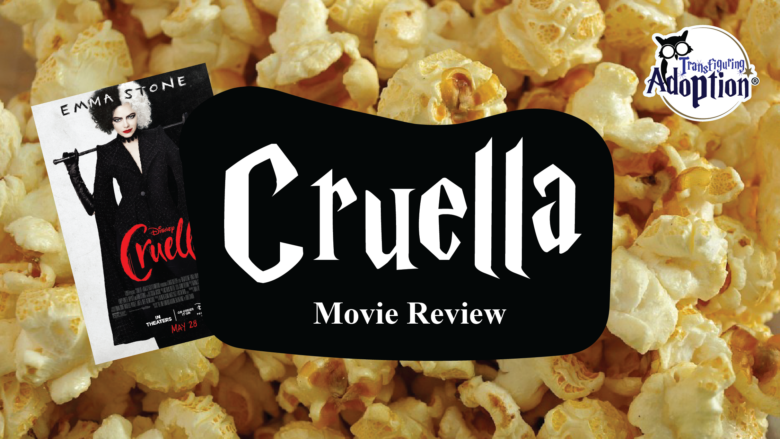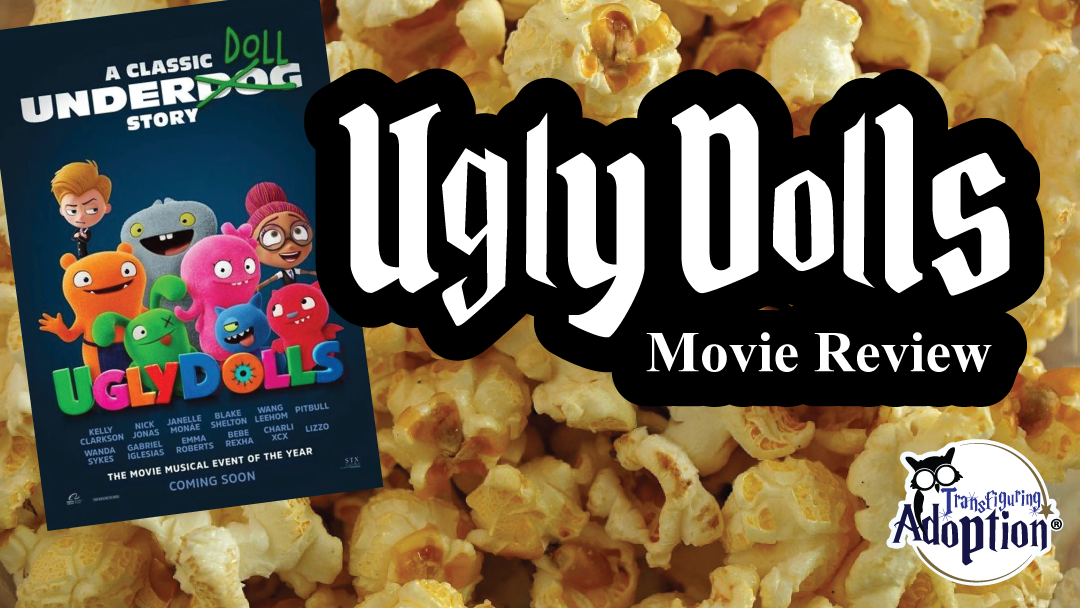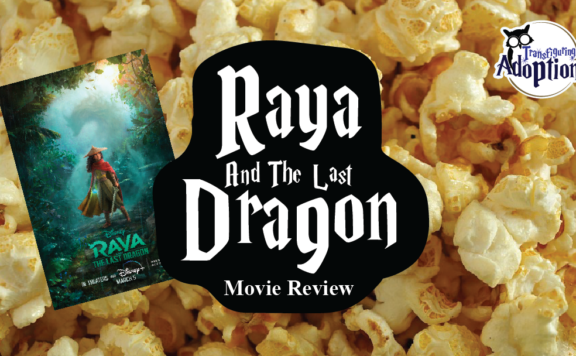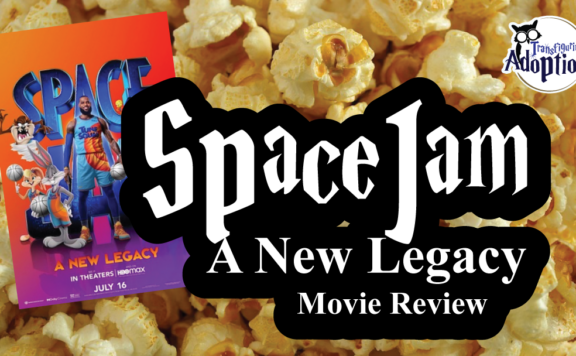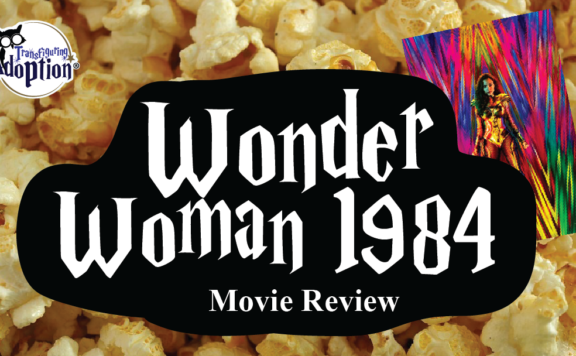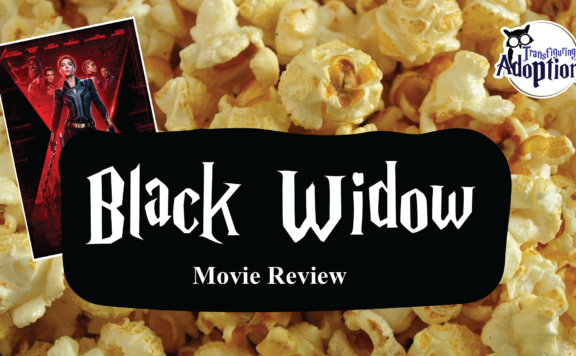Grade:
Transfiguring Adoption awarded this movie 2 Hoots out of 5 based on how useful it will be for a foster/adoptive family. [Learn more about our Hoot grading system here]
Movie Info:
- Rating: PG-13 (Thematic Elements, Some Violence)
- Genre: Comedy, Kids & Family
- Runtime: 134 minutes
- Studio: Walt Disney Pictures
From the Cover of Cruella (2021) by Walt Disney Pictures:
“Academy Award (R) winner Emma Stone (La La Land) stars in Disney’s Cruella, an all-new live-action feature film about the rebellious early days of one of cinemas most notorious — and notoriously fashionable — villains, the legendary Cruella de Vil. Cruella, which is set in 1970s London amidst the punk rock revolution, follows a young grifter named Estella, a clever and creative girl determined to make a name for herself with her designs. She befriends a pair of young thieves who appreciate her appetite for mischief, and together they are able to build a life for themselves on the London streets. One day, Estella’s flair for fashion catches the eye of the Baroness von Hellman, a fashion legend who is devastatingly chic and terrifyingly haute, played by two-time Oscar (R) winner Emma Thompson (Howards End, Sense & Sensibility). But their relationship sets in motion a course of events and revelations that will cause Estella to embrace her wicked side and become the raucous, fashionable and revenge-bent Cruella.”
Transfiguring Adoption’s Overview:
The target audience appears to be children who are ages 13 and up. This movie does relate to children who have suffered significant grief in the loss of a parent, however there are some other mature themes in this film that give an urgency for immense caution before watching this movie with your family — even for the younger teenagers in your home. This film is filled with potential triggers for children and teens alike who have endured trauma and should only be viewed if the teen in question is watching it with a safe caregiver they trust to ensure they have support should they become triggered during or after the movie viewing experience.
The film should not be viewed by children under 13 at all as this is truly a PG-13 film and not meant to be a family experience with younger children. I am well aware that many caregivers wish to provide their children with normalcy and watch some movies with a PG-13 rating based on the themes warned of in ratings. In addition to the mature plot and themes this movie is easily over two hours long and younger children will not be able to keep focus for such a long film. The themes of intense loss, perceived character deaths, and implied harm for animals in the midst of such dark imagery will be too much for your younger audience. If a caregiver insists on watching this with younger children I urge that they screen the movie first before making such a decision.
** Spoilers Could Be Ahead **
How Is This Relevant To Adoption & Foster Care?
Cruella (2021) is the tragic origin story of the infamous Cruella de Vil known by multiple generations of Disney fans as the manic fashionista hell-bent on turning the fashion industry on its head with a real Dalmatian fur coat. Why it was decided that Cruella needed an origin story is not clear as the lady herself is the narrator, but I’m assuming the franchise is investing in more origin stories similar to a few book series floating around Young Adult bookstore shelves these days in addition to the nostalgia effect that comes with titles like this. Anywho, our heroine/villain, then called “Estella”, tells of her upbringing as a little girl that “roared” before girls were supposed to. She racks up many suspensions and demerits in school for her eccentric behavior and retaliation for bullying in her younger years before attempting to move to London with her kind, supportive mother. Catherine, her mother, urges her to blend in more and to be sweet, but this is difficult for brash eccentric Estella, who her mother admonishes as “Cruella” when she is naughty. However, through a series of events Estella believes to be her fault she witnesses the death of her mother. She runs away from the scene where an unnamed woman claims Catherine was threatening her before Catherine fell from a terrace into the dark waters below. In the scuffle Estella drops a necklace she was told was a family heirloom and vows to be who her mother wished her to be, locking away the Cruella-esque persona. Estella runs to London with her dog, Buddy, and links up with Horace, Jasper, and their one-eyed dog Wink to survive the London streets as orphan pick-pockets. Over the course of time they up their heists, thanks to Estella’s talent for fashion and disguises and have a successful enough setup to allow Estella to pursue her dreams in fashion. Fast forward through the movie and Estella begins working for the famous designer, the Baroness, who interestingly enough now has the missing necklace. While trying to steal the necklace back, Estella begins to use the façade she names “Cruella” to conduct more heists and shenanigans. Eventually it is revealed that the Baroness is Estella’s biological mother, who had ordered her to be “taken care of” at birth and was saved by John the Valet and the woman she would call her mother, Catherine. In addition, the Baroness actually murdered Catherine on that fateful day. As a result the film becomes a revenge story and the rebirth of “Cruella” while the death of Estella plays out.
Really quickly it’s clear to see why this film could be an emotional minefield for your teen. I haven’t even touched on all the other potential triggers in the film yet because Cruella’s relationships with adults, especially parental figures, is so wrought with pain, grief, and loss. While some of these topics could yield some great discussion with your teen there is a lot more negative than positive when it comes to this film, especially once it’s factored in that this heroine is becoming the villain for the franchise. Caregivers should proceed with immense caution with this film experience for this reason.
Discussion Points:
-
- Survival/Trauma Behaviors
While a lot of Estella, Horace, and Jasper’s behaviors as children and young adults are not ideal, it is important for caregivers to understand that the lying and stealing weren’t just values that the children tossed aside without care. In fact, we see in Estella’s struggle with becoming a thief to survive very openly as difficult because this does not line up with what her mother would have wanted for her. However, when children must endure extraordinary situations without a caring adult to guide them it is completely understandable that a child may have to find new ways to survive. We find these ordinary reactions to extraordinary relationships to be maladaptive in our homes because these behaviors are no longer necessary, but this is the only way a child has survived before and that pattern will not cease because we tell them they are safe. Children act out with trauma or survival behaviors as a way to address a need. A caregiver should think of these behaviors as communications for an underlying need. Why did the kids steal? That’s what they had to do to eat. So if Estella was placed in your home and started to steal, wouldn’t it make more sense, in her context, that she was trying to prevent hunger? Or if Jasper lied about why he wanted to take the car out, if perhaps in the past he had been punished for telling the truth? Or if Horace snuck the dog in because this was his only source of comfort? This is what it means to be trauma informed: Looking beyond the behavior to see what your child is really needing, meeting that need, then teaching your child new ways to communicate that need. - Stages of Grief
I was quite impressed when Estella very accurately identified the stages of grief: Denial, Bargaining, Anger, and Sadness. However Estella was showing her budding persona as Cruella when she listed Revenge as the final stage rather than Acceptance. In reality Revenge is just a part of Bargaining and Anger and this may be something that a caregiver sees in their children as they process intense traumas associated with abuse, neglect, or loss. All of these affect a child’s relationship with others and can, therefore, cause children to act out towards others. With a caring, kinder, wiser adult though a child can be helped through the grieving process so they don’t become stuck and hellbent on something such as revenge instead of reaching acceptance. This point can be very difficult for adults who love children as we don’t like to see children suffer. However, grief is a very natural part of the human experience and children and teens alike desperately need a caring adult to show them how to grieve and to honor their grief to eventually reach acceptance. Parenting is certainly not for the faint of heart but very much worth it when we help a child feel much less alone in such large emotional swells. - Our Past is Not Our Destiny
Throughout the film there is a big emphasis on dichotomies. Black and white, mean or kind, mad or sane, etc. One thing that really stood out to me while I watched though is the struggle Estella experiences when she discovers the Baroness is her biological mother. Upon the realization, Estella begins to question how her future may unfold with having the genetics of a brilliant but narcissistic mother. Much like Estella, the children in your home may wonder how much like their biological parents they already are or may become in the future. It’s really easy for children to become overwhelmed and feel that genetics are the crystal ball into their future. This does not have to be the case though. Estella/Cruella sadly started to realize this before leaning more into the Cruella side of herself but her own legacy does not have to be defined by her mother and her own past. Sadly, Cruella was unable to integrate all of her experiences into herself and reach her highest potential but this does not have to be the case for your children as they gauge their strengths and weaknesses and discover who they are when guided by a caring adult. Had Cruella continued under the care of Catherine there is no telling how much more her talent and vision would have carried her… without trying to murder puppies.
- Survival/Trauma Behaviors
Cautionary Points:
- Significant Amounts of Violence
For a movie without guns I was shocked by how much violence took place in this movie. There are several sequences of hitting others with objects, using tasers on people, people falling, and main characters being murdered or attempted murdered. This includes Estella/Cruella multiple times and Catherine. There are also sequences of animals attacking people.
- Adults/Persons of Authority Portrayed as Abusive/Incompetent
Most of Estella’s relationships with adults are negative or abusive. The only exceptions are her adoptive mother, Catherine, and John the Valet. Estella’s mother, the Baroness, is labeled overtly as a narcissist and she certainly seems to fit the bill with how she berates others, employees or not. Baroness, while shrewd in business as she is genius with fashion, is verbally abusive to every person she encounters and often physically harms others, including tasing her mad out of curiosity and popping a champagne cork into a waiter’s face. Until her arrest at the end for Estella’s apparent murder, the Baroness never has consequences for her actions. It is even shown that she has influence over the London police, so she is very hard to catch up to legally. This can be triggering for youth with abusive or neglectful pasts as well as for teens with distrust for the police due to past experiences with these types of adults. Though Estella’s adoptive mother was wonderful and trustworthy, the school principals that continually treated Estella harshly and past experiences with police while pickpocketing would understandably attribute to a distrust of adults even before direct contact with the Baroness. - Character Deaths
During the course of the film Estella’s mother is murdered by the Baroness, it’s revealed that the Baroness ordered her child (Estella) to be “taken care of” (implied: killed) after her birth, the Baroness attempted to murder Estella by setting her warehouse on fire and framing Jasper and Horace, and then the Baroness pushed her from the terrace as she did Catherine. It is also implied that the Baroness has killed multiple times by her not knowing which murder was Catherine’s. Teens who have endured intense loss may react to this severely due to past experiences with death or permanent separation with primary caregivers. Youth who have also suffered from horribly abusive situations may also react to these scenes due to the surges of adrenaline and cortisol they may feel from experiencing something as intense as a character death.
- Sequences of Bullying
In addition to adults being downright disrespectful to one another, there are also sequences of children intensely bullying Estella as a child in the school yard (i.e. — punching, throwing things, spit wads, tossing her over stair rails, name calling, etc.) and as a young adult when she begins working for Liberty as a cleaner (i.e. — doors slammed in face, steps on her hand, shoves, etc.). Throughout the film Estella is bullied and looked down upon openly for being orphaned, both as a child and an adult. Youth that have endured trauma are especially susceptible to bullying from peers due to social deficits that may cause them to struggle to connect with their peers, much like Estella. Youth may also identify with Estella’s rage and instinct to seek vengeance for this bullying and justify seeking revenge instead of contacting a safe adult for assistance as well due to a natural distrust of adults due to experiences of abuse and neglect in the past.
- Animal Violence
Since there are dogs in the film there is some potential for triggering due to dog-related trauma. In a major plot point of Catherine’s death it’s revealed that the Baroness trained her Dalmatians to attack on command with a dog whistle and murdered Catherine (and possibly others). The Dalmatians viciously chase characters multiple times due to this. Wink also bites a few ankles in escape attempts during heists. No animals are harmed throughout the film, but it is implied that Cruella made a fur coat from the Baroness’s Dalmatians’ fur for revenge. Thankfully, this is debunked shortly after but still could be triggering for a child who has been on the receiving end of violence from a dog or has seen a beloved pet be harmed by humans.
- Survival/Trauma Behaviors
Throughout the film Estella and her comrades frequently lie and steal. At first this is primarily for survival, but overtime the heists become more complicated and grandiose, seemingly for the sake of doing it. While it’s easy to write this off as simply bad behavior it is important to remember that the children in your home may have needed to make some choices that to us may seem morally conflicted… but these behaviors allowed your child to survive up until this point and it will be very difficult to erase these behaviors due to a change in circumstances. Survival behaviors are ordinary reactions to extraordinary situations such as starvation, abuse, neglect, lack of supervision, and other perceived harms adults have perpetrated to them. In addition to the risk of a child being triggered by watching a child act in ways they once did for survival your child may be watching your reaction to such behavior and taking on the labels you may affix to Estella, Horace, and Jasper for such behaviors. Additionally, the Baroness also acts in similar manners as the “villain” of this movie which could also reinforce such behaviors for your youth.
- Poor Depictions of Police and Jail
In the film Estella, Horace, and Jasper frequently flee from the police and have negative interactions with persons of authority. All of them are forcefully arrested and at some point Horace and Jasper are arrested (wrongfully) for a crime they didn’t commit, which of course leads to a daring jailbreak. There are also sequences of police tackling the wrong suspects, high speed car chases, and other sequences that make the police look utterly foolish. None of these are helped by the fact the Baroness has clearly paid off the police and is frequently shown lying successfully to the police. This may not seem like a big deal for most children, but for youth who have witnessed difficult interactions with the police these depictions of police being against the heroes may be difficult for children with such traumas. This is another hit for youth that see adults as incompetent and unable to help as well due to past experiences with adults being the perpetuators of such abuses.
- Character Abuses Alcohol to Drunkenness
Granted, Estella is legally an adult in1960s London, but seeing a young character steal hard liquor from a boss and drunkenly vandalize a store front before passing out in the storefront isn’t a great look for a heroine. Youth who have been through trauma may have witnessed a lot of negative behavior while caregivers were under the influence of such substances. For this reason youth may be triggered by such behavior seen in the film.
- Some Toilet Humor
To be more specific, one of the Baroness’s Dalmatians eats the heirloom necklace in the film and, as a result, the necklace has to be retrieved through natural processes. This means there are many sequences of waiting for the dog to poop, checking the poop, and talking about poop in addition to a joke about bleaching the necklace after. This may not be high on the list of potential triggers, but if your youth is prone to negative behavior following bouts with potty-humor caregivers should beware.
- Poor Depictions of Mental Health
Throughout the movie Estella suffers from flashbacks and has immense struggles with mental health/self-esteem that manifest in “crazy” behavior with her Cruella persona. She also struggles immensely with comparing herself to her biological mother, who is frequently described as a narcissist and displays sociopathic tendencies with her behavior. This may be troubling for youth that struggle with flashbacks and depression themselves, especially if they know of mental health struggles from the biological family and have been on the receiving end of some difficult behaviors and words.
- Several Dangerous, Unrealistic Stunts
This film also features lots of dangerous stunts that make Estella and other characters appear cool and daring. This includes being dumped out of a dump truck to show a fashion gown, jumping from heights, using a dog as bait for other dogs, setting a dress on fire with alcohol to reveal an outfit underneath, scaling heights with rope, making a sophisticated parachute from a dress/skirt, graffiti tagging very tall buildings, characters being tied up/restrained, and characters running through fire to save others. While it’s great no main character has lasting damage or death from these sequences, these daring acts are not ones your youth should attempt to mimic as they could cause bodily harm in real life. There is also the possibility that the adrenaline rush experiences from these sequences may be difficult for children with trauma to handle because adrenaline boosts have occurred so frequently in childhood that a “good” adrenaline boost may be difficult for a child with trauma to differentiate from negative experiences that require fight-or-flight responses.
- This is a Villain Origin Story
At the end of the day, this is not really a traditional hero story. The character of focus is a future villain that will one day cause a lot of harm to others. For this reason the “heroine” of the film is not really a great role model for youth viewing the film. This will be why it is “acceptable” for her to act out as Cruella throughout the film and why some behavior is being encouraged over time. There are also some character components that hint towards this transition such as renaming the Baroness’ home “Hell Hall”, the evil cackle, and other traditionally “bad” things. It’s important to remember this because there is great potential in this movie to talk about all the things that indeed influenced Cruella’s naughty streak into (eventual) madness, but also about all the good influences that Cruella could have remained a more balanced Estella with (i.e. – Anita, Jasper, John, etc.). This may be difficult for children with strict dichotomous thinking like Estella and a caregiver should be cautious with such subject matter if their children struggle with integrating behavior into a whole person vs. only seeing the world in black/white terms like Estella.
Discussion Guide:
- Did you notice what kinds of things Estella, Horace, and Jasper had to do to survive? What were they?
Caregiver Note: This is an introductory question to help ease your teen into conversation about the movie. Often it’s hard to talk about such topics out of nowhere even for adults. For this reason it will be best to start with an open-ended question to start getting your child talking. Your youth may observe the stealing, lying, and running from police but they may also identify more behaviors that perhaps you did not notice. Regardless of what they list, this is a great sign that proceeding with the conversation will be okay because they are getting involved in a conversation. Try to use open-ended questions as much as possible, as this will open space for conversation and prevent them from the one-word response loops teens rely on to avoid intimacy and conversation. - Why do you think Horace and Jasper started to steal?
Caregiver Note: This is another introductory question to start the conversation with your teen. It’s important to acknowledge that these children were not stealing to be mischievous or fun. They were stealing for survival. Food, water, shelter, and clothing are all very important components for survival while relationships with others and social belongings may come up soon after for emotional needs. Since Horace and Jasper, and eventually Estella, don’t have family connections to provide these things for them they must find a way to get what they need to survive. So they steal food and money, squat in a condemned building, and build elaborate disguises to find anything else they may need like information. Since adults are not seen as trustworthy or competent that places a lot of barriers to safe relationships they can form with others so they are very much stunted with personal relationships outside of their small group and pets. For this reason it makes sense the children (and eventually, young adults) steal and avoid reliance on others to make ends meet. - Has there ever been a time you had to do something not-so-great to be safe?
Caregiver Note: This question may be difficult but is a good one to ask. Remember to bring your poker-face to this conversation as your child may tell you about some very hard experiences. They may not be so forthcoming and may keep this part short, but if they do start to tell you about themselves it is important to remember that just as they feel on the spot discussing these hard memories, they will be watching your reaction to see if you will still love and care for them as before. Remember to listen calmly without judgement and keep an open mind ready with curiosity to approach your child’s past. - What kinds of situations make it hard to ask for help when you need it? How can I help you feel comfortable asking for help now?
Caregiver Note: This is another question that may leave your child feeling vulnerable, so it’s best to let them lead the conversation and get comfortable with awkward silence. Sometimes silence may even mean your teen is thinking about the question and it may take them longer to respond to the question now that we are talking less about the characters and more about them. That’s quite alright, as we are getting them thinking about the connections between communication and behavior and that alone is a huge win! - What were the stages of grief that Cruella listed?
Caregiver Note: Shockingly enough, Cruella actually listed the stages of grief very well, with the exception of her addition of “revenge.” This shows that the Cruella narrating this story has had quite a bit of time to process her childhood/young adulthood and at least started to acknowledge parts of her own grief. For our children, large emotions can be hard to identify. As Dr. Daniel Seigel says, “You’ve gotta name it to tame it.” If children do not have connection to the emotions they are experiencing, they will not be able to honor those emotions and integrate them into themselves as healthy young adults reaching acceptance. This subject can be difficult for caregivers because we don’t like to see youth suffer and want to avoid it. However, grief is a very human experience and the best thing a caregiver can do is help their teen feel less alone while they move through grief rather than letting it build up and explode later. - How does Cruella express her grief? What could have helped her grieve towards acceptance rather than vengeance?
Caregiver Note: I really feel for Estella in this movie as someone who has worked with kids with trauma. While it’s not great for her to take this path and become a villain, she certainly comes by it honestly. In such a short amount of time Estella is abandoned by her biological mother, bullied hard for being unique, encouraged to hide who she is, loses the only mother she has ever known, blames herself for her mother’s death, is mentally/emotionally/financially abused by her biological mother, takes on the ghosts of her mother’s mental health as her own, and all this without a caring adult to help her? That’s a hardcore ACEs assessment score without having to essentially raise herself. Estella really has so much against her, so not having someone to reaffirm that becoming “Cruella” isn’t the answer to such an intense life it’s understandable how she could have chosen to become Cruella. Estella could have been better helped by having a larger support system from her adoptive parent, having other supports through childhood, having more supports in her school system, and having her pain and emotions acknowledged and honored rather than hidden, much like her bi-colored hair. - How can I be there for you when you are going through hard things?
Caregiver Note: This is another discussion point that your teen should lead. Every child is different in how they express grief, whether they are loud, boisterous and attention seeking like Estella or quiet and overly compliant like Horace or Jasper. However, if a child has been removed from the family of origin (permanently or temporarily) we can always assume that deep down that child is carrying an immense amount of grief. As much as we wish there was a magic wand or potion that could make all that pain go away, that doesn’t exist. For this reason a caregiver should be prepared to help your teen come to a state of calm when escalated, feel validation and acceptance for these strong emotions, and be given space to process through these emotions as many times as needed. The pain won’t go away entirely, but over time with acceptance that pain will heal and won’t hurt as hard when stroked by memories. Like a scar, the memory can become a testament to your teen’s strength and resilience rather than a tattoo to label and criticize if given the space to air out and loving words to treat. - Why does Estella allow herself to “die” and become Cruella?
Caregiver Note: Throughout the film Estella was made to feel that there was only good and bad and there was no in between. This is sad as, we know, Estella was often driven to make hard choices to survive that aren’t so black and white. Had Estella had more support from a trauma-informed parent she may have realized that her choices did not have to define her and that, in reality, her adoptive mother would not have been as disappointed in her as she internalized. Cruella is the result of this dangerous dichotomous thinking and why Estella felt she could not live. - Did Estella really have to become Cruella and copy her biological mother’s choices?
Caregiver Note: At the end of the day, Estella made a lot of mistakes in her youth… but if we were honest with ourselves none of us were saints in our formative years. Making mistakes is a part of growing up and usually does not label us into adulthood. I mean, imagine the worst thing you did growing up. Take off the rose colored glasses. Did you smoke weed? Did you sneak out to see a boyfriend or girlfriend? Take the parents’ car on a joy ride? I’ve taught foster parent classes for years and during one class about trauma I always allowed my participants to anonymously submit the “craziest” thing they did as teens, and I can tell you they are doozies! But did any of these crazy acts label them as stoners, thieves, or anything else into adulthood? Often they did not. It does not help our decision making, though, if we lack a strong, caring adult in our lives that can help us navigate such blunders and make better choices for the future. Children and teens often will rise to our expectations, good or bad, like Cruella so it’s important for a caregiver to remember this when they respond to misbehavior. - Was there ever a time where you felt you could never “go back”? How can I help remind you that you aren’t defined by your choices?
Caregiver Note: Allow your child to lead this part of the question. This may even be too hard for a one-time conversation and that’s perfectly fine. Some things you can do to help your child, even if they can’t vocalize their needs, is to be mindful of how you respond to misbehavior. Where do you set the bar for behavior? Is it too high sometimes? Do we tend to expect our children to know the rules intrinsically or are we taking time to explain the rules and why they exist? Do we tend to label our child as “bad” or by the behavior they display at their worst moments? How much attention do we pay to the good choices? Part of good parenting includes a lot of self-assessment of how we act and respond to our children’s communication through behavior. It is not a sign of weakness to take time to re-evaluate our own actions and behavior. In fact, it is a strength!
